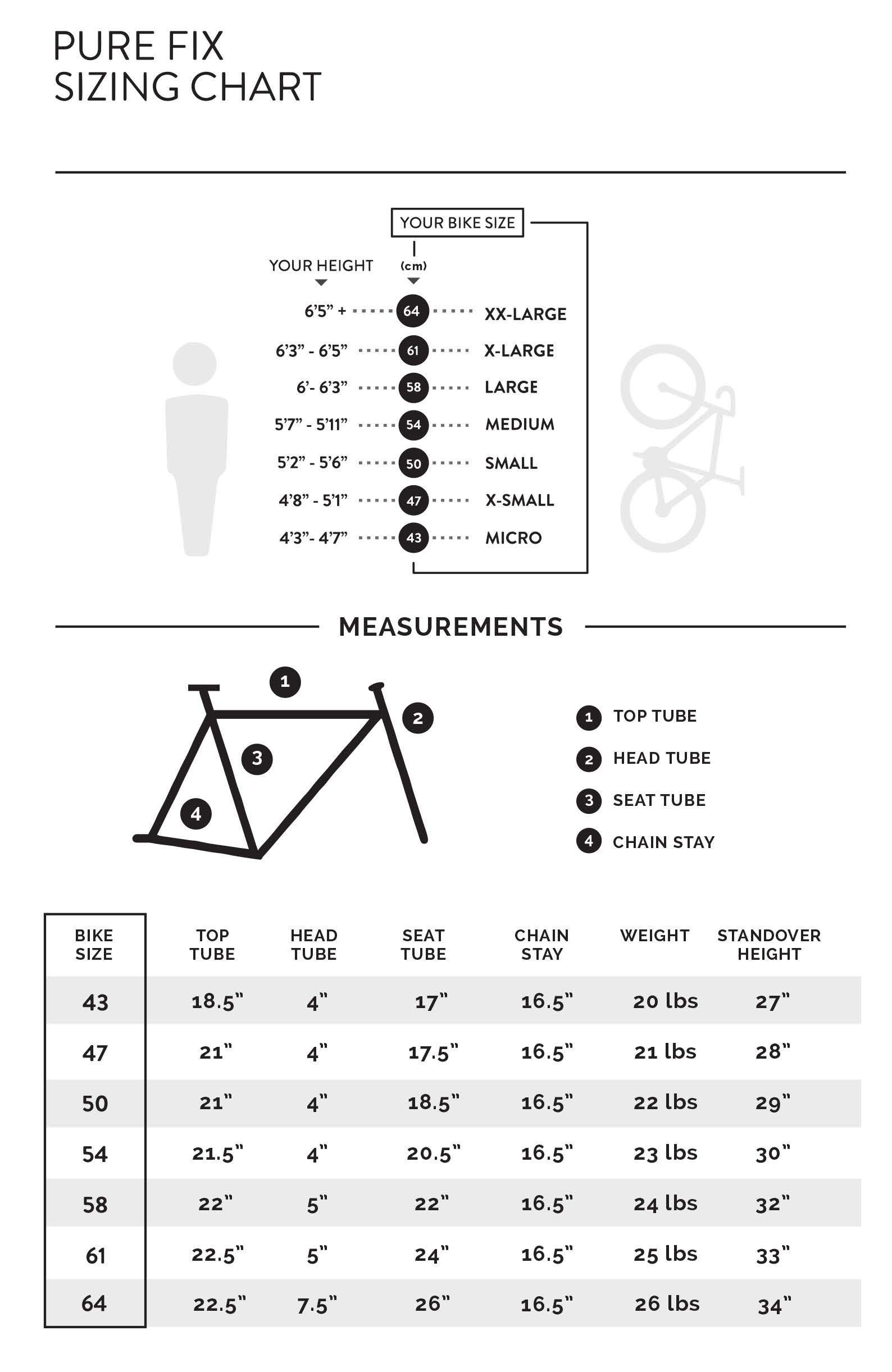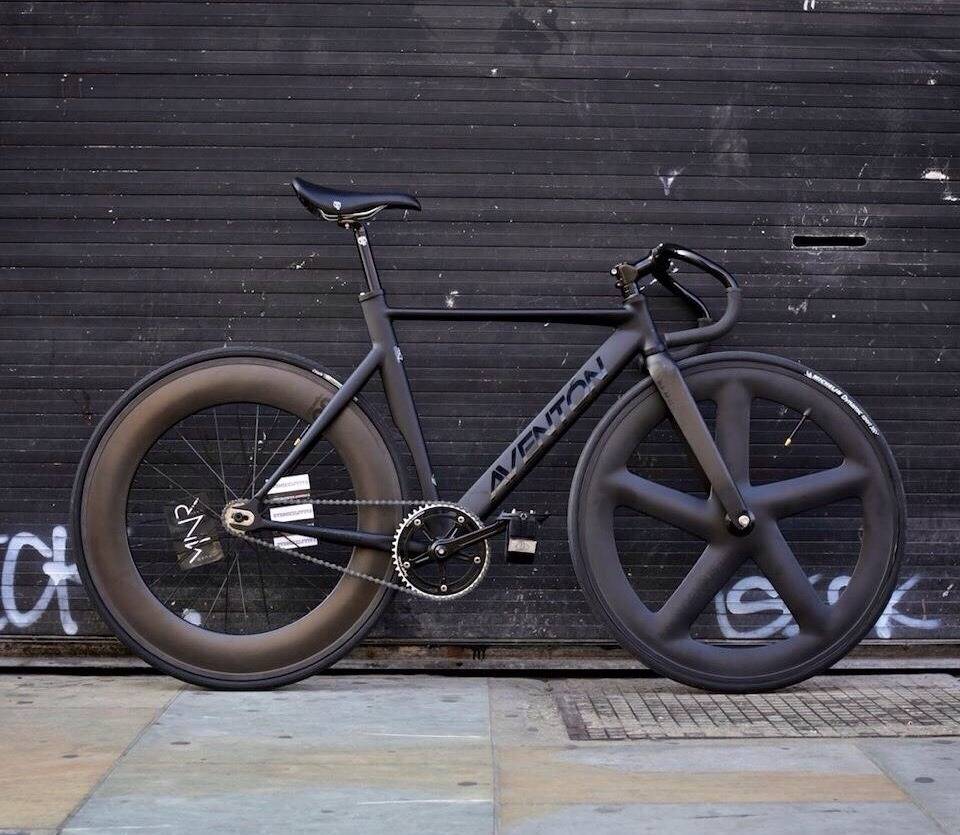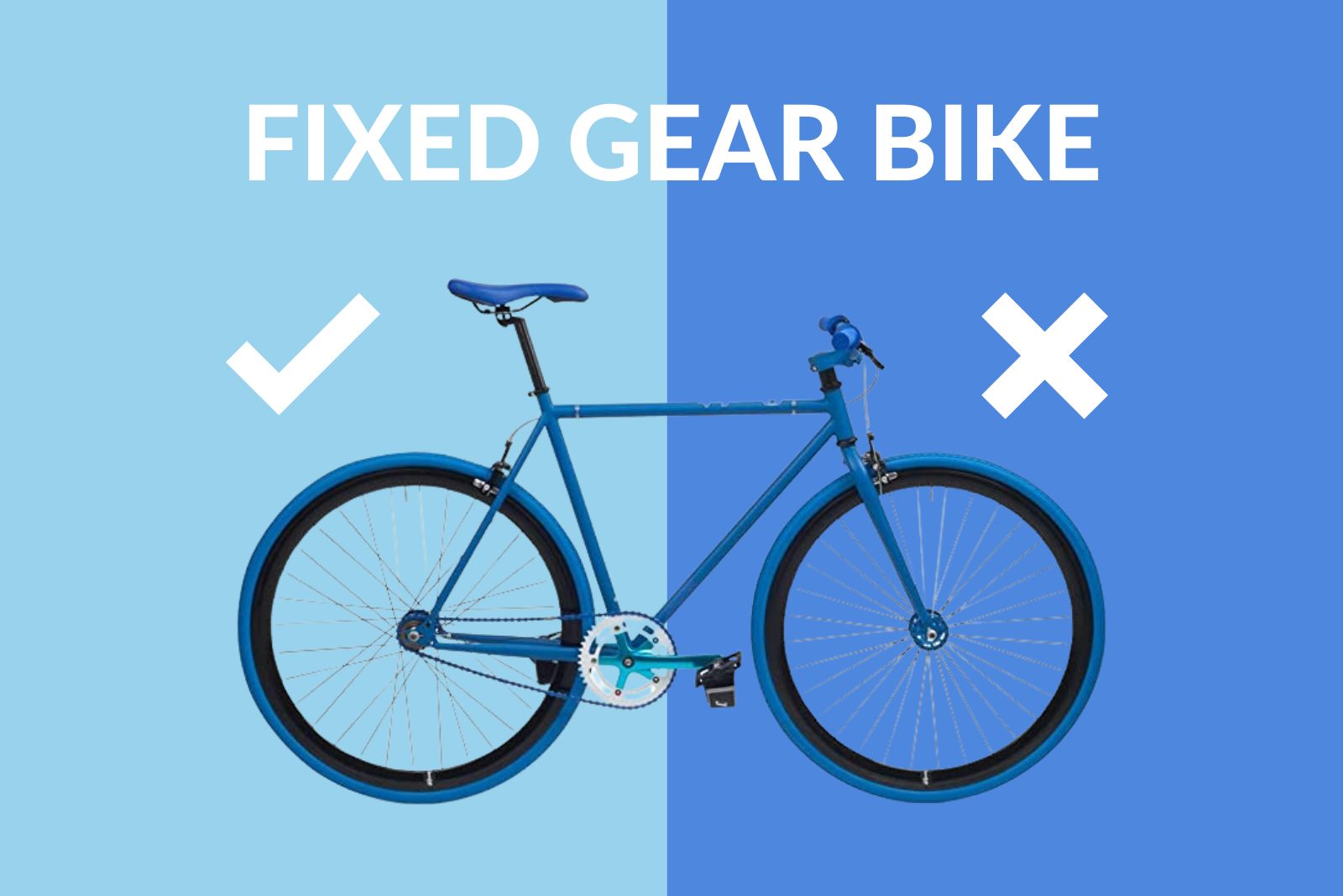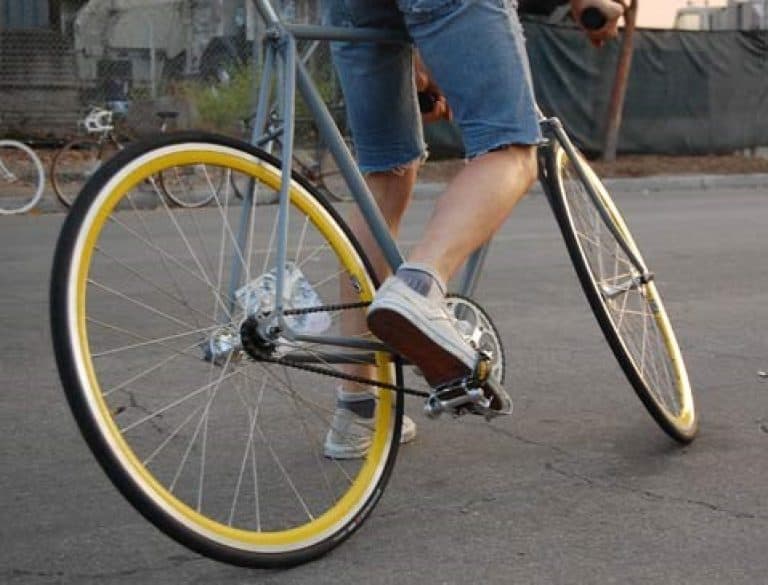Understanding Fixed Gear Bike Sizing
Fixed gear bike sizing plays a crucial role in the overall cycling experience, significantly impacting comfort, performance, and safety. Proper sizing ensures that riders maintain optimal control, reduce the risk of injury, and enjoy a more enjoyable ride. When sizing a fixed gear bike, consider several key factors, including rider height, inseam length, and body proportions. By taking these factors into account, cyclists can select a bike that fits their unique physique and riding style, ultimately enhancing their cycling experience.
How to Size a Fixed Gear Bike: A Step-by-Step Approach
To ensure a comfortable and efficient ride, follow these steps to size your fixed gear bike:
1. Measure Inseam Length
Begin by measuring your inseam length, which is the distance from the ground to your crotch. Stand with your back against a wall, place a book between your legs, and slide it up until it touches your crotch. Measure the distance from the ground to the top of the book. This measurement will help determine the appropriate frame size and saddle height for your fixed gear bike.
2. Calculate the Appropriate Frame Size
For fixed gear bikes, a common rule of thumb is to aim for a frame size that is about 1 to 2 inches smaller than your inseam length. For example, if your inseam measures 32 inches, look for a frame size between 30 and 31 inches. This range ensures a comfortable riding position and adequate standover clearance.
3. Adjust Saddle Height
With the frame size determined, set the saddle height to a level that allows your leg to extend almost fully when pedaling at the bottom of the stroke. A general guideline is to set the saddle height so that your knee has a slight bend when the pedal is at its lowest point. This adjustment helps optimize power transfer and reduces strain on your knees.
4. Set Handlebar Reach
Proper handlebar reach is crucial for maintaining control and reducing strain on your back and shoulders. Ideally, your arms should be slightly bent when gripping the handlebars, and your back should remain in a neutral position. If necessary, adjust the stem length or swap it out for a different size to achieve the perfect fit.
5. Fine-Tune Your Position
Once the primary adjustments have been made, take your fixed gear bike for a test ride to fine-tune your position. Pay attention to any areas of discomfort or strain, and make additional adjustments as needed. Remember that finding the perfect fit may take some time and experimentation, so be patient and persistent in your efforts.
By following these steps, you can effectively size your fixed gear bike and enjoy a comfortable, efficient, and safe riding experience. Keep in mind that proper sizing is an essential aspect of fixed gear bike ownership, and regular maintenance and adjustments will help ensure long-term comfort and performance.
Popular Fixed Gear Bike Models and Their Sizing Specifications
When searching for the perfect fixed gear bike, it’s essential to consider sizing specifications to ensure a comfortable and efficient riding experience. Here, we review three popular fixed gear bike models and their respective sizing specifications:
1. State Bicycle Co. Core-Line
The State Bicycle Co. Core-Line is a versatile and stylish fixed gear bike, available in various frame sizes to accommodate riders of different heights:
- 49 cm: Suitable for riders between 4’10” and 5’3″ tall
- 52 cm: Ideal for riders between 5’3″ and 5’7″ tall
- 55 cm: Fits riders between 5’7″ and 5’11” tall
- 57 cm: Recommended for riders between 5’11” and 6’2″ tall
- 59 cm: Suitable for riders between 6’2″ and 6’5″ tall
2. Pure Fix Original
The Pure Fix Original is another popular fixed gear bike model, offering a range of frame sizes to fit a variety of riders:
- 43 cm: Designed for riders between 4’10” and 5’2″ tall
- 49 cm: Ideal for riders between 5’2″ and 5’8″ tall
- 54 cm: Fits riders between 5’8″ and 6’0″ tall
- 57 cm: Recommended for riders between 6’0″ and 6’4″ tall
- 60 cm: Suitable for riders between 6’4″ and 6’8″ tall
3. Critical Cycles Harper Single-Speed
The Critical Cycles Harper Single-Speed is a sleek and durable fixed gear bike, available in the following frame sizes:
- 43 cm: Designed for riders between 4’10” and 5’2″ tall
- 49 cm: Ideal for riders between 5’2″ and 5’8″ tall
- 53 cm: Fits riders between 5’8″ and 6’0″ tall
- 57 cm: Recommended for riders between 6’0″ and 6’4″ tall
By understanding the sizing specifications of popular fixed gear bike models, you can make an informed decision when selecting a bike that fits your unique physique and riding style. Remember that proper sizing is crucial for ensuring comfort, performance, and safety on your fixed gear bike.
Common Fixed Gear Bike Sizing Mistakes and How to Avoid Them
When sizing a fixed gear bike, it’s crucial to avoid common mistakes that can lead to discomfort, reduced performance, and even injuries. Here are some common pitfalls and practical tips to ensure a proper fit:
1. Relying Solely on Frame Size
Frame size alone does not determine the perfect fit for a fixed gear bike. It’s essential to consider other factors, such as saddle height, handlebar reach, and stem length, to achieve a comfortable and efficient riding position.
2. Neglecting Saddle Height Adjustments
Proper saddle height is crucial for optimal power transfer, reduced strain on your knees, and overall comfort. To determine the correct saddle height, follow the guidelines provided in the “How to Size a Fixed Gear Bike” section of this article.
3. Ignoring Handlebar Reach and Stem Length
Proper handlebar reach and stem length ensure a comfortable and efficient riding position, reducing strain on your back, shoulders, and neck. Adjust the stem length and handlebar reach as needed to achieve a neutral spine and relaxed grip on the handlebars.
4. Overlooking Pedal and Cleat Positioning
For riders using clipless pedals, proper cleat positioning is essential for efficient power transfer and reduced strain on your knees. Ensure that your cleats are aligned with the ball of your foot and adjusted to minimize lateral movement during the pedal stroke.
5. Failing to Consider Crank Length
Crank length can impact your pedaling efficiency and comfort. While most fixed gear bikes come with standard crank lengths, some riders may benefit from shorter or longer cranks depending on their body type and riding style. Consult a bike fit specialist for personalized recommendations.
By avoiding these common mistakes, you can ensure a proper fit for your fixed gear bike, enhancing your comfort, performance, and safety on the road or track. Remember that finding the perfect fit may take some time and experimentation, so be patient and persistent in your efforts.
The Role of Fixed Gear Bike Sizing in Injury Prevention
Proper fixed gear bike sizing plays a critical role in preventing injuries and ensuring a safe and enjoyable riding experience. Incorrect saddle height, handlebar reach, and frame size can lead to various issues, such as knee pain, back discomfort, and reduced control over the bike. By addressing these potential risks, riders can avoid more serious problems and maintain long-term comfort and performance on their fixed gear bikes.
1. Incorrect Saddle Height
Riding with a saddle that is too high or too low can cause knee pain, strain, and reduced power transfer. Proper saddle height ensures a comfortable and efficient pedaling motion, minimizing the risk of injury and improving overall performance.
2. Improper Handlebar Reach
Excessive handlebar reach can lead to back pain, neck strain, and reduced control over the bike. By adjusting the handlebar reach to a comfortable level, riders can maintain a neutral spine position and enjoy a more relaxed and secure riding experience.
3. Inappropriate Frame Size
Riding a fixed gear bike with a frame size that is too small or too large can negatively impact handling, stability, and comfort. Proper frame size ensures adequate standover clearance, optimal control, and a comfortable riding position.
To prevent injuries related to fixed gear bike sizing, it’s essential to take the time to size your bike correctly and make any necessary adjustments. Regularly reassess your bike fit as your body changes or if you experience discomfort during rides. By prioritizing proper sizing, you can enjoy the benefits of fixed gear riding while minimizing the risk of injury and maximizing your overall cycling experience.
Customizing Your Fixed Gear Bike: Adjustments and Modifications for a Perfect Fit
Achieving the perfect fit on your fixed gear bike often involves more than just selecting the right frame size. Various adjustments and modifications can be made to further customize your bike and enhance your riding experience. Here are some recommendations for components to consider when fine-tuning your fixed gear bike fit:
1. Stems
Stems come in different lengths and angles, allowing you to adjust your handlebar reach and riding position. A shorter stem brings the handlebars closer to you, while a longer stem increases the distance. An angled stem can also help achieve a more upright or aggressive riding position, depending on your preference and flexibility.
2. Handlebars
Handlebars are available in various shapes, widths, and materials, catering to different riding styles and preferences. For a more relaxed riding position, consider wider, higher handlebars. For a more aerodynamic stance, narrower, lower handlebars may be appropriate. Additionally, consider ergonomic handlebars to reduce strain on your wrists and hands during long rides.
3. Saddles
Saddle selection is highly personal, as comfort and support are crucial for long-term comfort and performance. When choosing a saddle, consider factors such as width, shape, and padding. A properly fitting saddle should distribute pressure evenly across your sit bones, minimizing discomfort and numbness during rides.
4. Pedals and Cleats
For riders using clipless pedals, proper cleat positioning is essential for efficient power transfer and reduced strain on your knees. Ensure that your cleats are aligned with the ball of your foot and adjusted to minimize lateral movement during the pedal stroke. Additionally, consider experimenting with different pedal systems and cleat designs to find the best fit for your riding style and foot shape.
When customizing your fixed gear bike, remember that small adjustments can make a significant difference in your riding experience. Take the time to experiment with different components and settings to find the perfect fit for your unique body type and riding style. By investing in a well-fitted fixed gear bike, you can enjoy a safer, more comfortable, and more enjoyable riding experience.
Maintaining Your Fixed Gear Bike: Regular Adjustments for Long-Term Comfort and Performance
Proper fixed gear bike sizing is crucial for a comfortable and efficient riding experience, but it’s equally important to maintain your bike’s fit over time. As your body changes and adapts to cycling, regular adjustments may be necessary to ensure continued comfort and performance. Here are some tips for maintaining your fixed gear bike’s fit:
1. Periodic Assessments
Schedule periodic assessments of your bike fit, ideally every six to twelve months or whenever you notice discomfort or changes in your body. During these assessments, reevaluate your saddle height, handlebar reach, and other key components to ensure they remain optimized for your riding style and body type.
2. Saddle Height
Monitor your saddle height and make adjustments as needed. A general guideline is to set the saddle height so that your knee has a slight bend when the pedal is at its lowest point. However, this may vary depending on your personal preferences and riding style. Regularly reassess your saddle height to maintain optimal power transfer and knee alignment.
3. Handlebar Reach
As you become more experienced and confident on your fixed gear bike, you may find that you prefer a more aggressive or relaxed riding position. Adjusting your handlebar reach can help achieve this. Consider swapping out your stem or handlebars for different lengths or angles to fine-tune your bike’s fit and accommodate any changes in your flexibility or riding style.
4. Component Wear and Tear
Regularly inspect your bike’s components for wear and tear, and replace them as necessary. Worn-out components, such as saddle rails or handlebar clamps, can compromise your bike’s fit and safety. Ensure that all components are securely fastened and functioning correctly to maintain your bike’s fit and performance.
By staying proactive in maintaining your fixed gear bike’s fit, you can enjoy long-term comfort and performance. Regular assessments, adjustments, and component maintenance will help ensure that your bike remains tailored to your unique body type and riding style, providing a safer, more enjoyable riding experience.
Frequently Asked Questions About Fixed Gear Bike Sizing
When it comes to fixed gear bike sizing, many riders have questions and concerns about finding the perfect fit. Here are some common questions and answers to help guide you in the process:
“What if I’m between sizes?”
If you find yourself between sizes, consider your riding style and preferences. For a more aggressive position, opt for the smaller size. If you prefer a more relaxed riding position, choose the larger size. Additionally, consider making adjustments to your saddle height, handlebar reach, and stem length to fine-tune the fit.
“How do I know if my saddle height is correct?”
A properly adjusted saddle height allows your knee to maintain a slight bend when the pedal is at its lowest point. To check your saddle height, sit on your bike with your heel on the pedal and pedal backward. Your leg should be almost fully extended at the bottom of the pedal stroke. When clipped in, a slight bend in your knee should remain.
“Should I prioritize frame size or handlebar reach when sizing my fixed gear bike?”
Both frame size and handlebar reach are important factors in achieving a proper fit. Ideally, you should consider both when sizing your fixed gear bike. A bike with the correct frame size but an improper handlebar reach can still result in discomfort or reduced performance. Aim to find a balance between the two to ensure a comfortable and efficient riding position.
“Can I adjust my fixed gear bike’s fit without professional help?”
Yes, you can make some adjustments to your fixed gear bike’s fit on your own, such as adjusting saddle height and handlebar reach. However, for more complex modifications, such as swapping stems or handlebars, it may be beneficial to consult a professional bike fitter to ensure the changes are made correctly and safely.
By addressing these common questions and concerns, you can gain a better understanding of fixed gear bike sizing and make informed decisions when selecting and adjusting your bike. Remember that finding the perfect fit may take some time and experimentation, but the effort will be worthwhile for a safer, more comfortable, and more enjoyable riding experience.







